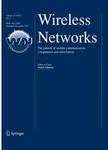版权所有:内蒙古大学图书馆 技术提供:维普资讯• 智图
内蒙古自治区呼和浩特市赛罕区大学西街235号 邮编: 010021

作者机构:Northeastern Univ Qinhuangdao Hebei Key Lab Marine Percept Network & Data Proc Lab Cognit Radio & Big Spectrum Data Proc Qinhuangdao 066004 Peoples R China Northeastern Univ Sch Comp Sci & Engn Shenyang 110819 Peoples R China
出 版 物:《WIRELESS NETWORKS》 (Wireless Networks)
年 卷 期:2025年第31卷第3期
页 面:2143-2154页
核心收录:
学科分类:0810[工学-信息与通信工程] 0808[工学-电气工程] 0809[工学-电子科学与技术(可授工学、理学学位)] 08[工学] 0812[工学-计算机科学与技术(可授工学、理学学位)]
基 金:National Natural Science Foundation of China Natural Science Foundation of Hebei Province [F2024501005]
主 题:Ensemble learning Intrusion detection Long short term memory Graph convolution neural network Support vector machine
摘 要:As one of the promising technologies for enhancing network security, network intrusion detection is crucial for accurately identifying various network attacks. To advance the intrusion detection capability, a multiple classification ensemble learning algorithm (MCELID) is proposed by analyzing intrusion data from diverse perspectives. Firstly, an individual learner combining graph convolutional networks and long short-term memory networks (GCN-LSTM) is constructed to extract both structural information and temporal correlations from intrusion data. Meanwhile, a weighted support vector machine (W-SVM) model is employed for handling multi-classification tasks, where the conditional probability is calculated to derive the probability vector of input samples. Finally, the intrusion detection result is determined by a soft voting mechanism that combines the classification results from the GCN-LSTM and W-SVM models. Extensive experiments conducted on the KDD-CUP 99 dataset demonstrate that the proposed MCELID algorithm outperforms other existing methods in terms of detection accuracy, particularly in the recognition of DOS and Probe attacks.